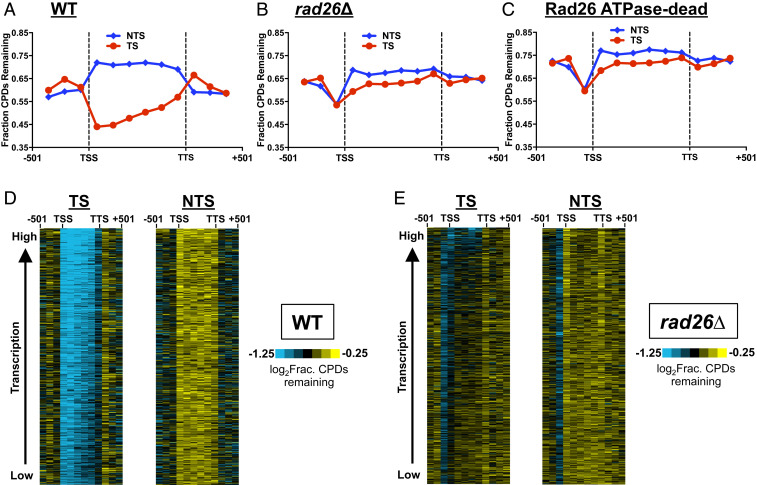Fig. 1.
Rad26 is generally required for TC-NER in the yeast genome. (A) CPD repair is faster in the TS relative to the NTS in WT cells. The coding region of each gene (n = 5,205) was separated into six equal-sized bins. Three additional bins in the promoter and terminator were also presented. The number of CPD-seq reads at 2 h was counted in each bin and normalized by CPD-seq reads at 0 h. The resulting fraction of remaining CPDs was plotted. Repair in the flanking sequences (e.g., upstream of TSS and downstream of TTS) appears to be faster than repair in the NTS of the coding region, likely because many of these flanking sequences overlap with the transcribed regions of neighboring genes and, thus, are partially repaired by TC-NER. (B) Deletion of RAD26 significantly reduces repair in the TS. CPD-seq data in the rad26∆ mutant was analyzed. (C) The ATPase activity of Rad26 is essential for TC-NER. Same as A, but CPD-seq data in the Rad26 ATPase-dead mutant was analyzed. (D) Gene cluster plot of fraction of remaining CPDs in the TS (Left) and NTS (Right) in WT cells. Each column represents one bin, from promoter to terminator of each gene, and rows indicate fraction of remaining CPDs at 2 h. Median levels of CPDs are depicted in black. Blue and yellow indicate low and high levels of CPDs, respectively (see color bar). Rows were sorted by gene transcription frequency (28), from lowest to highest. (E) Same as in D, except analysis of rad26∆ CPD-seq data.

